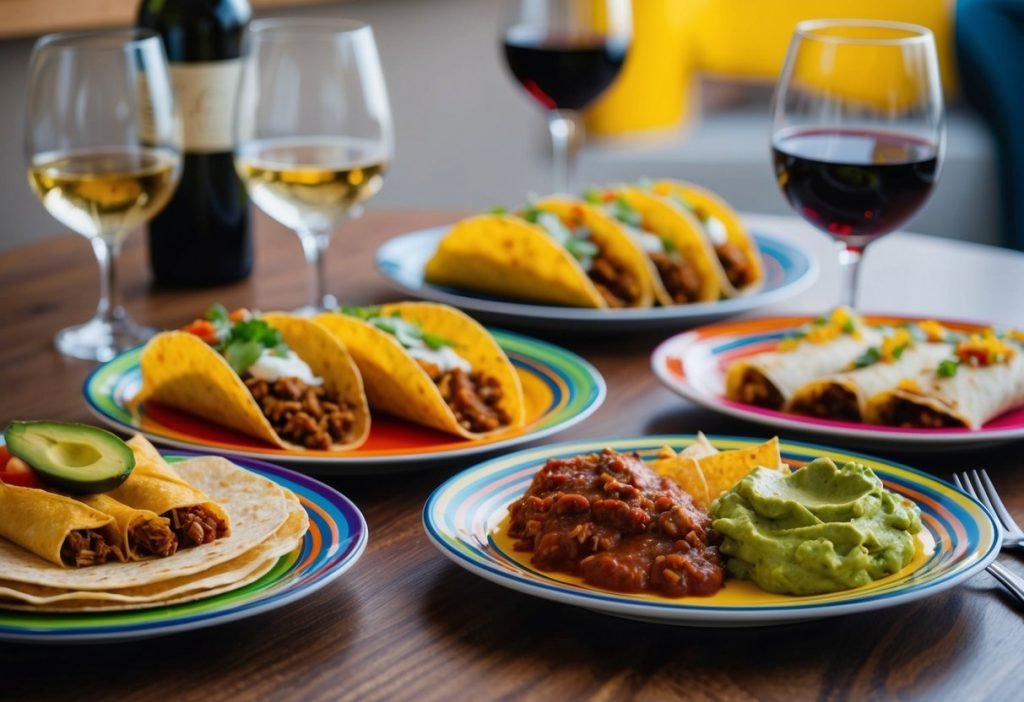Pairing wine with dessert can elevate a meal, creating a harmonious balance of flavors. Choosing the right wine can enhance the sweetness of desserts and bring out their complex notes, making the entire experience more enjoyable. Understanding the fundamentals of flavor profiles is essential for successful pairings.

For example, a rich chocolate cake often pairs well with a full-bodied red wine, such as Cabernet Sauvignon, which complements its intensity. Conversely, lighter desserts like fruit tarts benefit from a crisp white wine such as Riesling, which adds a refreshing contrast. By recognizing the characteristics of both the wine and dessert, one can create delightful combinations that leave a lasting impression.
Exploring various pairings opens up a world of taste possibilities. Whether indulging in a creamy cheesecake or a decadent brownie, finding the right wine can transform any dessert into an unforgettable finale.
The Art of Pairing Wine with Desserts
Pairing wine with desserts involves understanding the sweetness of the dessert, the acidity of the wine, and how they balance in flavor and texture. Attention to these elements can enhance the dining experience significantly.
Understanding Sweetness Levels
Sweetness in desserts varies widely, from mild flavors in shortbread cookies to intense sweetness in chocolate torte. Matching the sweetness of the wine to that of the dessert is crucial. A wine that is sweeter than the dessert can be overwhelming, while a less sweet wine may taste sour in comparison.
For example:
- Desserts with mild sweetness: Pair with Lightly Sweet Wines like Moscato.
- Moderately sweet desserts: Opt for Sweet Riesling or Sauternes.
- Rich, sweet desserts: Complement with Late Harvest Wines or Port.
This harmony enhances the flavors of both the dessert and wine.
The Importance of Acidity
Acidity plays a vital role in balancing sweetness. A wine with higher acidity cuts through the richness of desserts, providing a refreshing contrast. It’s essential for the wine to offer enough acidity to prevent the dessert from becoming cloying.
Consider these pairings:
- Fruit-based desserts: Choose wines like Champagne or Prosecco with crisp acidity.
- Cheesecakes or creamy desserts: Pairs well with a wine that has vibrant acidity, such as Chenin Blanc.
- Chocolate desserts: An acidic wine like Ruby Port can enhance flavors without overwhelming.
The acidity in wine refreshes the palate, making each bite as enjoyable as the last.
Balancing Flavors and Textures
Balancing flavors and textures is crucial when pairing. Consider both the dominant flavor notes in the dessert and the wine’s profile. A smooth dessert pairs well with a round, velvety wine, while a crunchy dessert may require a textured wine for contrast.
For instance:
- Chocolate mousse: A rich, full-bodied Malbec complements its texture.
- Tarts with fruit: A sweet, crisp Gewürztraminer enhances both the fruit and pastry.
- Chewy cookies: A light-bodied Zinfandel can highlight the cookie’s sweetness and texture.
This careful consideration ensures that the pairing is not only harmonious but also elevates the overall dining experience.
Classic Wine and Dessert Combinations
Pairing wine with dessert can enhance the flavors of both. Specific combinations can create a delightful culinary experience. Here are three classic pairings that are sure to please.
Port and Chocolate
Port wine, particularly vintage or tawny varieties, excels with chocolate desserts. The rich, sweet notes of port complement the depth of chocolate, creating a harmonious balance. A square of dark chocolate paired with a glass of ruby port enhances both the bitterness of the chocolate and the wine’s fruitiness.
For those who enjoy it, chocolate fondue with assorted fruits can also be a winning combination. The fruit’s acidity cuts through the sweetness, allowing the port to shine. A general rule is to match the intensity of the dessert with the port’s body, choosing full-bodied ports for rich chocolate cakes.
Riesling and Fruit Tarts
Riesling offers a refreshing contrast to the sweetness of fruit tarts. Its balanced acidity highlights the tartness of the fruit while the wine’s sweetness complements the dessert’s flavors. A well-chilled Riesling pairs particularly well with tarts featuring berries, peaches, or apples.
When selecting a Riesling, consider the style; a sweeter version will work best with more intensely sweet desserts. Drizzling a bit of honey on the fruit can elevate the pairing. This duo transforms a simple dessert into a showcase of flavors, enhancing the dining experience.
Moscatel and Creme Brulee
Moscatel, with its fragrant and sweet profile, matches beautifully with the creamy texture of creme brulee. The floral notes of the wine complement the vanilla flavors in the dessert, while its sweetness balances the brulee’s caramelized sugar topping.
Choosing a well-chilled Moscatel elevates the whole experience. The contrast between the smooth custard and the wine’s brightness makes this pairing memorable. Topped with fresh berries, the flavors become even more vibrant, turning an elegant dish into a celebration of tastes.
Innovative Pairings and Trends

New trends in wine and dessert pairings have emerged, highlighting unconventional combinations and exploring unique dessert wines. As palates evolve, these innovative pairings enhance the dining experience.
Unconventional Pairings
Chefs and sommeliers are increasingly experimenting with unexpected wine and dessert blends.
- Spicy Foods with Sweet Wines: A Riesling can complement spicy desserts like ginger cake.
- Savory Desserts: Pairing a rich chocolate dessert with a bold Cabernet Sauvignon creates a surprising balance.
Some are turning to fruit-forward reds to accompany desserts featuring berries, emphasizing the fruit in both the wine and the dish. Additionally, desserts with herbs or spices, such as rosemary-infused cakes, can be matched with aromatic whites like Sauvignon Blanc.
Dessert Wines Beyond the Standard
Traditional dessert wines like Sauternes and Port remain popular, but new varieties are gaining attention.
- Orange Wines: These wines, made from white grapes that have undergone extended skin contact, pair well with citrusy desserts.
- Sparkling Wines: Prosecco or Champagne can elevate the experience when paired with light pastries or fruit desserts.
Cider, especially those with a sweeter profile, is also making waves in dessert pairings. This inclusivity offers diners fresh options to explore new flavor dimensions.



